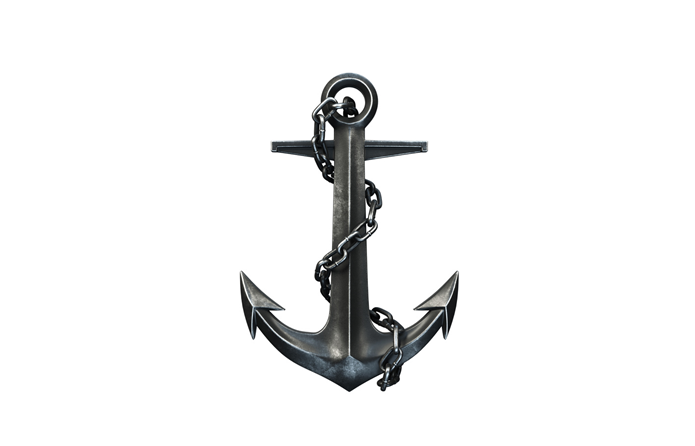Anchoring is a psychological phenomenon wherein a person is influenced by certain reference points he or she is given at the beginning. Accordingly, a high claim in an arbitration, or a high starting offer in a negotiation, can influence the end result. Research suggests, however, that also nondescript information, i.e. information that carries no useful information for the issue to be decided, can influence decision making. Does this also work in arbitration?
Psychology teaches that information presented to an audience at the beginning of an oral or written presentation can serve as a so-called anchor and thus influence the decision-making process. Anchoring is a phenomenon wherein a person’s decision is influenced by certain reference points the person is given beforehand.
Even without knowing the theory behind it, dispute resolution practitioners intuitively make natural use of this phenomenon. In competitive negotiations, parties start with maximum offers that are subsequently lowered by way of concessions. The first offer thus functions as an anchor. In comparison to this anchor-offer, the lowered offer seems more reasonable to the opposing party. This is because humans, including negotiators, do not evaluate an offer in the abstract, but in relation to reference points. An offer is not good or bad in itself, but only good or bad in relation to one’s own expectations or previous offers.
The same holds true for litigation and arbitration. It is not uncommon for parties to assert maximum claims to begin with, whereas they may well anticipate that only lower sums are adequate. However, by claiming maximum (plausible) positions, claimants stand the chance that the judge’s or arbitral tribunal’s final judgment is influenced by such anchors, i.e. is higher than it would have been otherwise. In relation to the high claim, or counterclaim, the final result then seems reasonable or adequate.
The workings of this phenomenon have, for instance, been demonstrated in a study by psychologists Englich and Mussweiler. They analyzed the influence of anchoring effects on sentencing in criminal cases.[1] The researchers gave participating criminal judges identical case studies describing a hypothetical case of an alleged rape. Different trial judges, however, were given different sentencing demands by the prosecutors. Half of the participants received a prosecutor’s demand for a prison sentence of two months. The other half was given a set of documents in which the demand was 34 months. Englich and Mussweiler showed that the participants, experienced trial judges, were influenced by those anchors. Participants who were given the high sentencing demand also determined higher sentences (on average, 28.7 months); participants who were given the low sentencing demands only determined a sentence of 18.78 months on average.[2] Studies like this show that anchoring works; how exactly it works, however, is yet unclear. The most likely explanation is that anchoring is linked to the phenomenon of positive hypothesis testing. The trial judges in the research carried out by Englich and Mussweiler most likely arrived at their determination by testing the positive hypothesis that the respective demand was, in fact, appropriate. In doing so, the judges selectively retrieved information that is consistent with the assumption.[3] Accordingly, the participants singled out anchor-consistent information while neglecting counter-evidence.
The previous results stand to reason. It is only natural that somebody else’s assessment of certain facts, be it in form of a claim, a negotiation offer or a sentencing demand, influences decision making. What is less known is that anchoring also works with anchors that carry no relevant information in regard of the subject matter to be decided. The classic study in this regards was carried out by Tversky and Kahneman.[4] The two researchers asked participants about the number of African countries in the United Nations. However, the questions were asked in a two-step procedure. In the first step, the participants had to spin a wheel of fortune, purportedly stopping randomly at certain figures. The wheel, however, was rigged and always stopped at the same number. For a first group of participants, the wheel stopped at the number 65. The participants where then asked whether they believe that the percentage of African countries was larger or smaller than 65 percent of the United Nations. Most participants assumed (correctly) that it would be lower. Next, they were asked for their best guess as to the exact percentage. Their average answer was 45 percent. Next, Tversky and Kahneman asked a different group of participants. This time, the wheel of fortune stopped at the number 10. The test persons where also asked whether the percentage of African nations in the UN would be larger or smaller than 10 percent. Most participants correctly assumed that the percentage was higher than 10 percent. When these participants were asked for the exact percentage, the average outcome was 25 percent. With this landmark study, Tversky and Kahneman have demonstrated that even ‘useless’ information, i.e. information that is obviously not on topic, can serve as an anchor and thereby influence a person’s decision. Similarly, Falk and Alles report an anchoring experiment they carried out with lawyers, leaning on Kahneman’s experiment.[5] The set-up was as follows. The test persons were given questionnaires that were purported to be continuously numbered. For one peer group, the questionnaire’s number was (always) 4450, for the other peer group 8450. Both groups were given the same two-step question. First, they were asked whether the German stock index DAX would be higher or lower than the number of the questionnaire at a specified time in the future. Based on the current DAX figure when the question was asked, the expected answer for the first peer group (questionnaire number 4450) was higher, whereas the expected answer for the other group (questionnaire number 8450) was lower. In the second question, the test persons were asked to make a specific estimate as to the DAX value at the specific future date. Falk and Alles showed that the average estimate for 4450 questionnaires was 6367, whereas the average estimate for 8450-questionnaires was 6716. Interestingly, they carried out the same experiment on a different occasion and with different test persons, this time a mixed group of professionals, predominately composed of non-lawyers. Here, the 4450-questionnaires estimated a DAX value of 5.186 on average, whereas the 8450-questionnaires estimated 6264 points on average. Accordingly, the discrepancy between the two was considerably higher, the anchoring effect presumably stronger.
Both the experiments by Tversky/Kahneman and Falk/Alles are similar in that the use obviously uninformative information anchors. The test persons in Tversky and Kahneman’s experiment believed that the wheel they turned was a genuine wheel of fortune that produced random figures. Accordingly, they were aware that the displayed number did not provide any useful information in regard of the number of African nations in the UN. Likewise, Falk and Alles’ probands were aware that their questionnaire’s number was nondescript in terms of the German DAX. Still, anchoring seems to work. It does, however, not work in all situations, but only in case the person confronted is confronted with insecurity. Assuming that one of Tversky/ Kahneman’s test persons had known the number of African nations in the UN (and the overall number), anchoring would not have worked. Likewise, a re-seller of a new iPhone 6 will find it difficult to manipulate potential buyers by way of anchoring because the market price is more or less fixed – there is no insecurity. But in litigation and arbitration, there often are such areas of insecurity where judges and arbitrators are prone to fall victim of the anchoring effect.
Following such research, the question arises whether ‘useless’ anchors can also play a role in arbitration proceedings. In terms of persuasiveness, and with regard to the anchoring effect, does it make a difference whether a party asserts a payment claim of “EUR 0.6 million per month for the periods between January and December”, or whether the claim is for “EUR 7,200,000,–“? There is no discrepancy fact-wise, one number simply appears higher than the other. Does it make a difference whether a party in a construction arbitration argues claims additional costs for 10 construction workers for a period of 8 months, or whether “2,400 additional man days” are claimed, or “19,200 additional man hours“? Does it make a difference whether a party offers 12 witnesses instead of 4, even if the additional 8 witnesses do not contribute additional information? Does the mere number of pages in a written submission or the number of exhibits make a difference?
Let the author know your view, in particular any other examples where “useless” information may influence an arbitral tribunal due to the anchoring effect.
ragnar.harbst@bakermckenzie.com
[1] Birte Englich and Thomas Mussweiler, “Sentencing under Uncertainty: Anchoring Effects in the Courtroom,” in the Journal of Applied Social Psychology (2001), 1535 – 1551.
[2] Englich/Mussweiler, 1540.
[3] Harbst, A Counsel’s Guide to Examining and Preparing Witnesses in International Arbitration, 56.
[4] See Kahneman, Thinking, Fast and Slow, at 119.
[5] Falk/Alles, Verhaltensökonomik und Anwaltsrhetorik, ZIP 2014, 1209.






